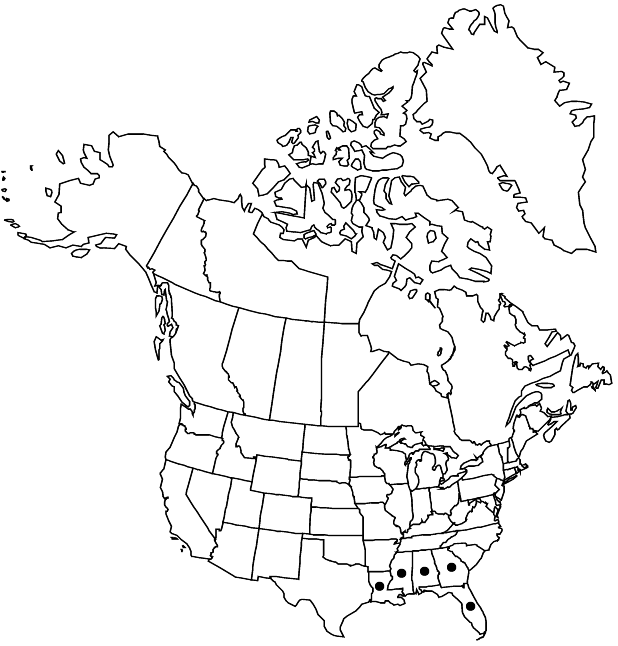Gaylussacia mosieri
Torreya 27: 36. 1927 ,.
Plants 3–10 (–15) dm, forming small to extensive colonies; branches somewhat spreading; twigs of current season pale green, often finely glandular-hairy (hairs reddish). Leaves: petiole 1–2 mm; blade pale green abaxially, green adaxially, ovate to oblong, 2.5–5 × 0.7–2.5 cm, subcoriaceous, base cuneate, margins entire, apex rounded to obtuse, surfaces stipitate-glandular-hairy and eglandular-hairy (hairs relatively shorter), abaxial surface also sessile-glandular. Inflorescences spreading, 4–8-flowered, bracteate, 3–6 cm, often glandular-hairy (hairs silvery-silky, reddish, 1–1.5 mm); bracts persistent, leaflike, 5–12 mm at maturity, longer than pedicels, hairy and stipitate-glandular-hairy. Pedicels 5–7 mm, stipitate-glandular-hairy; bracteoles 1–2, 3–6 mm. Flowers: sepals 5, 2–3 mm, stipitate-glandular-hairy (hairs 1–1.5 mm); petals 4–5, corolla white or pinkish, campanulate, 6.5–8.5 mm (averaging 7.4 mm), lobes triangular, 1.2–1.7 mm; filaments 3–4 mm, glabrous; anthers included, 2.5–4.3 mm, thecae divergent distally; ovary stipitate-glandular-hairy (hairs 1–1.5 mm). Drupes juicy, sweet, glossy black, 6–9 mm diam., stipitate-glandular-hairy (hairs to 1 mm). Seeds 2–2.3 mm.
Phenology: Flowering spring.
Habitat: Pitcher plant bogs, hillside seepage bogs, wet pine savannas and flatwoods
Elevation: 0-100 m
Distribution

Ala., Fla., Ga., La., Miss.
Discussion
Gaylussacia mosieri is an eastern Gulf coastal plain endemic found in Sarracenia-dominated seepage bogs; it is related to G. bigeloviana, G. dumosa, and G. orocola and is easily distinguished by the glandular hairs on the hypanthium, bracts, pedicels, and twigs: 1–1.5 mm versus less than 0.5 mm for the other three species.
Selected References
None.
Lower Taxa
"entire" is not a number."dm" is not declared as a valid unit of measurement for this property.